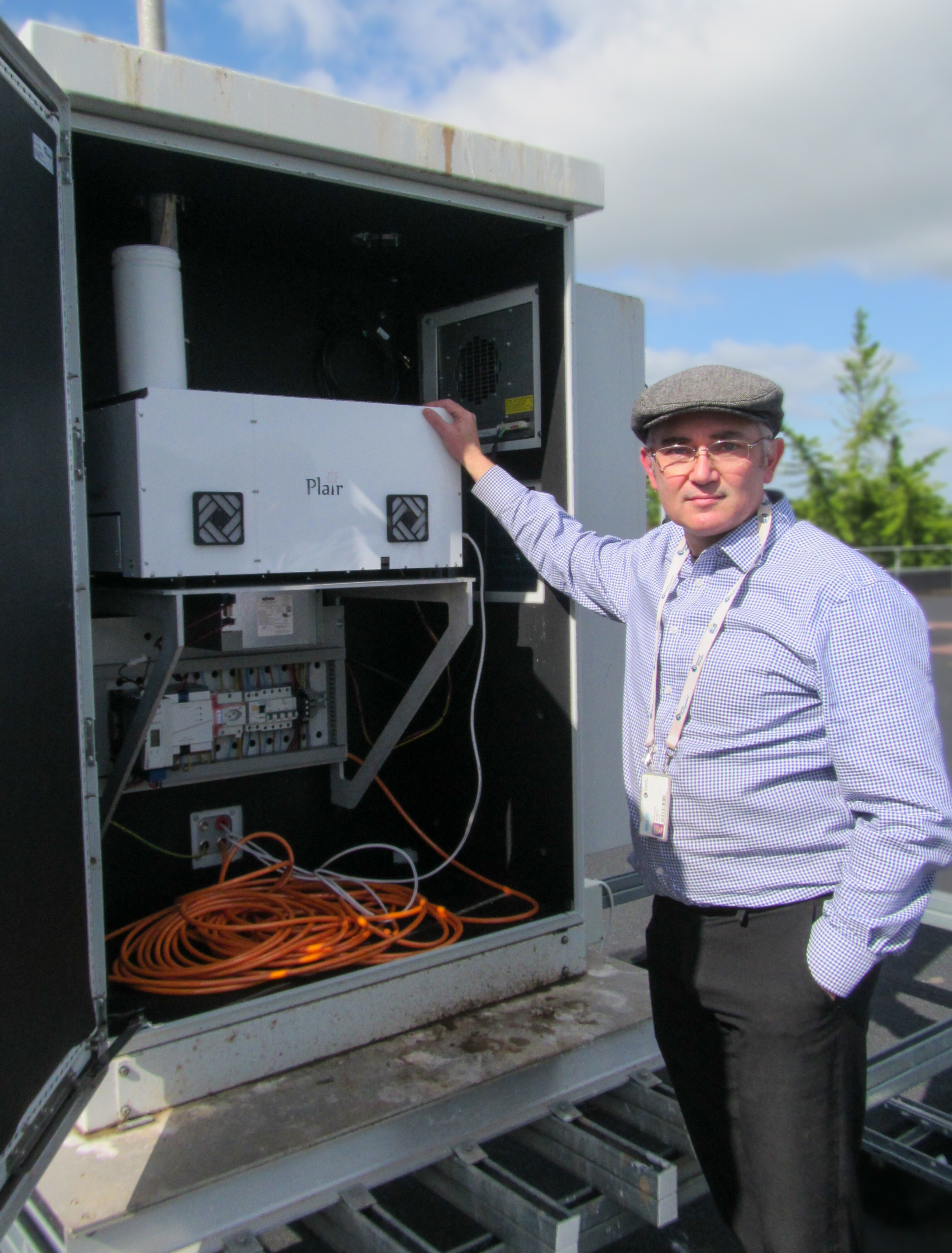Research into pollen DNA and artificial intelligence to give allergy sufferers accurate warnings and better medicine
Pollen isn’t - atishoo! – just pollen. Some grasses are bad news for allergy sufferers, while others are completely harmless. Aarhus University has appointed one of the world's leading researchers in air-borne allergens, Carsten Ambelas Skjøth, to sequence pollen DNA and make real-time pollen counts to make life better for pollen-allergy sufferers.

Aarhus University is bringing Professor Carsten Ambelas Skjøth back to Denmark from the University of Worcester in England, where, since 2013, he has been researching which pollen and fungal spores trigger allergies and how the spores spread through the air.
This follows a RECRUIT Grant of DKK 16.8 million from the Novo Nordisk Foundation, which will finance a new research group consisting of Carsten Ambelas Skjøth and several postdocs. The group will be based at the Department of Environmental Science at Risø near Roskilde, and this will give them access to technicians and important infrastructure. He starts in his new job on September 1.
Carsten Ambelas Skjøth approaches the air-borne allergens from several angles with his research:
Firstly, by capturing pollen and fungal spores from the air and sequencing their DNA. This method is called environmental DNA or eDNA.
Another approach is to set up instruments that use laser measurement and artificial intelligence to identify particles in the air and to make accurate local pollen warnings in real time.
Both approaches could be a big help to allergy sufferers in Denmark.
Perhaps better vaccines
This is because when it comes to allergies, pollen is not just pollen – not even if it comes from the same plant family. Some pollens trigger allergic reactions, others do not.
This was the finding of Carsten Ambelas Skjøth and his research team in the UK after they investigated the DNA of different types of grass pollen and linked the data with health data.
"We found that some grasses are particularly aggressive at triggering allergies, and that the grass used as a model and for immunotherapy over here in the UK, Timothy grass (Phleum pratense), is virtually absent from the air Worcester, where I live. On the other hand, we found a lot of pollen from the perennial ryegrass (Lolium perenne). This may mean that there are areas in which vaccinations don’t work so effectively. This may also apply in Denmark, but there are differences in the types of grasses used in the vaccination programmes in different countries," says Carsten Ambelas Skjøth. He is allergic to pollen himself, and although he had undergone a vaccination programme in Denmark, he experienced that his pollen allergy flared up after he moved to the UK.
He adds that grass pollen in Denmark may be different from the pollen he has sequenced in the UK. Just like all other life, grasses can mutate.
The equipment has to be trained
Rapid and accurate pollen counts are a slightly more long-term goal, because new equipment has to be trained to identify pollen from plants in Denmark, and mathematical models have to be made that use artificial intelligence to give real-time classification of the pollen count from the equipment.
The equipment and models can also be used in agriculture to identify spores from fungi that attack plants, but this application is still so new that we don’t know the boundaries of the research and thus the application.
However, getting back to allergy, the professor believes that here in Denmark we can already reduce the effects in cities by targeting the low-hanging fruit:
"We can make sure there are fewer birch trees in gardens and parks, and mow the grass in the right places, because pollen doesn’t usually spread very far. What you do in the immediate vicinity can have a big effect. Grass pollen can come from the edges of ditches, fields, natural areas and gardens. We know from other studies that if we reduce the pollen intensity over a long period of time, we can also expect a reduction in symptoms and even in the number of new pollen-allergy sufferers. We cannot or should not remove all pollen allergens, but we have got control of some things," says Carsten Ambelas Skjøth.
When he moves to AU, he will bring with him management and administration of the ADOPT research network (New Approaches in Detection of Pathogens and Aeroallergens), which is being funded by the EU and includes approx. 100 researchers from 37 countries. The main task of the network is to conduct research and coordinate international activities within the field that the professor and the new research group will be working on. After Brexit, these activities cannot remain in the UK.
Contact
Professor Carsten Ambelas Skjøth,
University of Worcester,
email: c.skjoth@worc.ac.uk
mobile: +44 (0) 1905 855226
